Soviet modernist: Rem Koolhaas-designed Garage Museum of Contemporary Art opens in Moscow
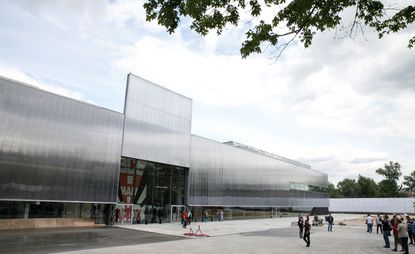
Architecture studio OMA has resurrected a 1960s Soviet Modernist ruin as a contemporary art museum in Moscow's Gorky Park, restoring original features and wrapping the two-storey space in a gleaming polycarbonate façade.
The 5,400 sq m building is a new permanent home for the Garage art centre founded in 2008 by art collector and philanthropist Dasha Zhukova and named after the centre's first location, the Konstantin Melnikov-designed Bakhmetevsky Bus Garage. More recently, a nearby pavilion designed by Japanese architect Shigeru Ban has provided a temporary home.
The new structure looks nothing like its Brezhnev-era predecessor, the 1,200-seat Vremena Goda restaurant that OMA founder Rem Koolhaas first saw when he visited Moscow in his twenties.
'What we tried to do was to preserve some of the history of its decay. For me, the great fallacy of the whole preservation movement is that it can only preserve great monuments,' says Koolhaas.
New architectural interventions include a double-height lobby that accommodates large-scale commissioned projects such as the debut Come to Garage! painting by Russian artist Eric Bulatov.
The double layered translucent polycarbonate façade also acts as a space in which to hide the building's electrical services while two 11-metre wide panels on either side of the building slide upwards revealing views in- and outwards. Garage curator Kate Fowle says this creates a unique 'visual interface' with the park that has also received something of a facelift with manicured lawns and an artificial beach where young Moscovites suntan on sculptural recliners.
According to Koolhaas, the generous dimensions of 1960s Soviet architecture offered a unique chance to experiment with the act of preservation in a 'radical' way adding galleries, education facilities, an auditorium, and a rather utilitarian-looking cafe.
Inside, original brickwork has been left exposed while 'found' features like a crumbling mosaic artwork and moss-green ceramic tiles - once ubiquitous in Soviet interiors - are coupled with contemporary concrete and birchwood floors.
OMA's innovative design stands in contrast to Moscow's relatively conservative art scene where political works are especially still perceived as highly controversial. The inaugural programme avoided any such issues with the likes of Yayoi Kusama's playful works that included several of the park's trees sheathed in the artist's trademark polkadot pattern, Rirkrit Tiravanija's Ping-Pong Club Moscow, and a small concrete space that will eventually contain a work made from nuclear waste. It is 'scheduled' to arrive post-treatment in 3015.

With sleek, geometrical lines and an emphasis on horizontality and modernist traits, this new architecture reflects OMA founder Rem Koolhaas's desire to retain elements of the past. Photography: Yuri Palmin. Courtesy of Garage Museum of Contemporary Art
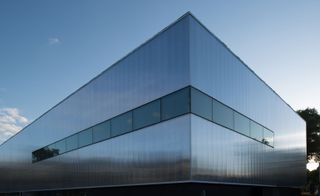
The building's angular appearance is striking in the otherwise completely natural and green environment of Gorky Park. Photography: Yuri Palmin. Courtesy of Garage Museum of Contemporary Art
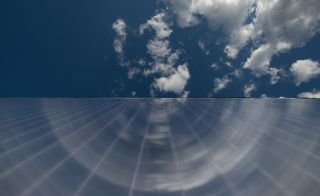
However although the building is modern and very architectural in form, its reflective surfaces also make it one close to nature as it blends into the mirrored environment. Photography: Yuri Palmin. Courtesy of Garage Museum of Contemporary Art

From up close, the facade seems rougher, as though sanded. Photography: Yuri Palmin. Courtesy of Garage Museum of Contemporary Art
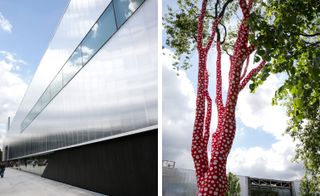
The architecture is complemented with playful designs by Japanese artist Yayoi Kusama: the trees surrounding the museum are covered in red paint and white spots. Photography: David X Prutting/BFAnyc.com
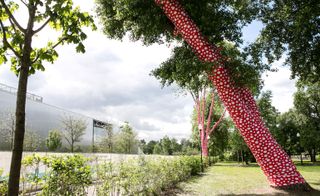
This repetitive pattern, typical of Kusama's work, galvanises the space and gives it colour. Photography: David X Prutting/BFAnyc.com
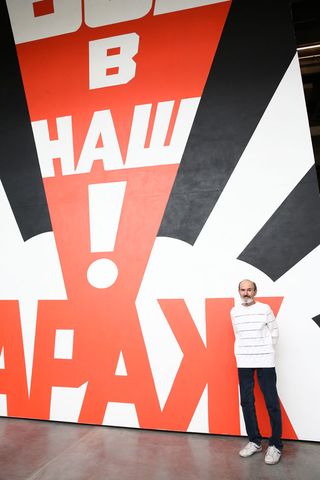
Russian artist Eric Bulatov stands next to his large-scale painting which reads 'Come to Garage!' His pioneering work generally mocks Soviet propaganda and totalitarian regimes. Photography: David X Prutting/BFAnyc.com
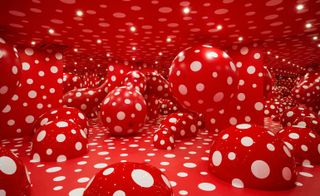
Echoing the outdoor tree installations, Kusama's 'Dots Obsession' room painted in red and covered with white dots refers to the artist's hallucinatory visions of multiplying objects and patterns. Photography: Egor Slizyak. Courtesy of Garage Museum of Contemporary Art
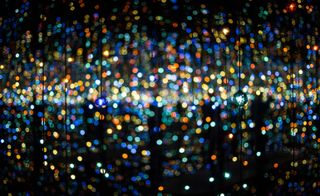
Simarly, Kusama's 'Infinity Room' embodies her way of envisaging the world: a succession of random dots overwhelming and blurring her rational perceptions. Photography: Egor Slizyak. Courtesy of Garage Museum of Contemporary Art
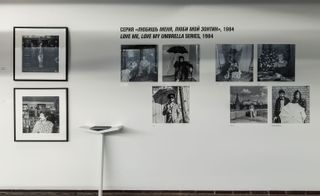
A collection of black and white photogaphs entilted 'Love Me, Love My Umbrella,' whimsically taking after the title of a Jabberheads' song, populates the walls of a dedicated room at Garage. Photography: Egor Slizyak. Courtesy of Garage Museum of Contemporary Art
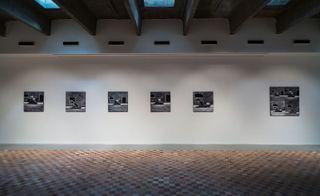
The photographs exhibited are strategically placed, voluntarily leaving the brickwork visible for instance, so as to both compliment the surrounding architecture and the pieces themselves. Photography: Egor Slizyak. Courtesy of Garage Museum of Contemporary Art
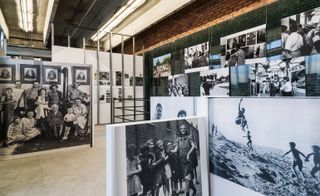
Garage's permanent collection is comprised of documentary and artistic photographs... Photography: Egor Slizyak. Courtesy of Garage Museum of Contemporary Art

...But also of major paintings by Pollock, Odilon Redon, De Chirico, Dali and many others... Photography: Egor Slizyak. Courtesy of Garage Museum of Contemporary Art

A design corner has been established in the new Garage premises, displaying mundane and precious objects which marked Russian history. Photography: Egor Slizyak. Courtesy of Garage Museum of Contemporary Art
ADDRESS
9/45 Krymsky Val Street
119049, Moscow, Russia
Wallpaper* Newsletter
Receive our daily digest of inspiration, escapism and design stories from around the world direct to your inbox
-
 New Phaidon book celebrates the world's best designers
New Phaidon book celebrates the world's best designersDesigned for Life: The World’s Best Product Designers by Phaidon celebrates the rich contemporary landscape of product design
By Tianna Williams Published
-
 The moments fashion met art at the 60th Venice Biennale
The moments fashion met art at the 60th Venice BiennaleThe best fashion moments at the 2024 Venice Biennale, with happenings from Dior, Golden Goose, Balenciaga, Burberry and more
By Jack Moss Published
-
 Crispin at Studio Voltaire, in Clapham, is a feast for all the senses
Crispin at Studio Voltaire, in Clapham, is a feast for all the sensesNew restaurant Crispin at Studio Voltaire is the latest opening from the brains behind Bistro Freddie and Bar Crispin, with interiors by Jermaine Gallagher
By Billie Brand Published